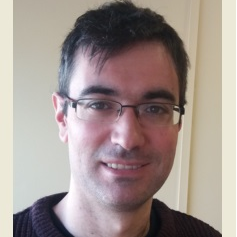Low-Cost Water Management Solutions
A special issue of Water (ISSN 2073-4441). This special issue belongs to the section "Wastewater Treatment and Reuse".
Deadline for manuscript submissions: closed (31 October 2022) | Viewed by 8903
Special Issue Editor
Special Issue Information
Dear Colleagues,
In the last few years, the wide concerns about water scarcity, water pollution and circular economy have resulted in an emerging interest in the development of low-cost water treatment systems. The continuously increasing threat to global water supplies makes it imperative to create water security strategies to preserve sources by reconsidering impacts of technologies applied. Wastewater treatment and reutilization has been pointed out as a cornerstone of future sustainable towns, factories and other water demanding activities. Conventional technologies of water treatment and reutilization were developed during the past century inside a context of massive fossil fuel and resources utilization. Nowadays, this picture has changed and technologies of low carbon and reduced energy consumption must be adapted to every human activity. In this scenario, low-cost water management strategies must be adopted. This include the development of new processes and revisitation of green methods based on nature based technologies. Our goal in proposing this special issue entitled “Low-cost water management solutions” is to combine innovative and already stablished research activities on environmentally friendly technologies of water management. Therefore, the contributions to this special issue will encompass a broad spectrum of topics in low impact water technologies, including, but not limited to:
- Green technologies for wastewater treatment
- Wastewater reuse: new technologies with low energy impact
- Nature based solutions for wastewater treatment and reuse
- Resource recovery from wastewater
- Emerging pollutants in water resources, occurrence and solutions
- Renewable solutions for water scarcity
- Sustainable agriculture in the water scarcity scenario
- Smart solutions for water management
- Wastewater as nutrient resource
- Green filters for water treatment and resource recovery
- Microalgae based solutions for organic effluent treatment
- Smart water management in modern agriculture
- Water reutilization in circular economy
- Water regulation in the global warming scenario
- Organic polluted effluents as energy and nutrient resource
Dr. Ignacio de Godos
Guest Editor
Manuscript Submission Information
Manuscripts should be submitted online at www.mdpi.com by registering and logging in to this website. Once you are registered, click here to go to the submission form. Manuscripts can be submitted until the deadline. All submissions that pass pre-check are peer-reviewed. Accepted papers will be published continuously in the journal (as soon as accepted) and will be listed together on the special issue website. Research articles, review articles as well as short communications are invited. For planned papers, a title and short abstract (about 100 words) can be sent to the Editorial Office for announcement on this website.
Submitted manuscripts should not have been published previously, nor be under consideration for publication elsewhere (except conference proceedings papers). All manuscripts are thoroughly refereed through a single-blind peer-review process. A guide for authors and other relevant information for submission of manuscripts is available on the Instructions for Authors page. Water is an international peer-reviewed open access semimonthly journal published by MDPI.
Please visit the Instructions for Authors page before submitting a manuscript. The Article Processing Charge (APC) for publication in this open access journal is 2600 CHF (Swiss Francs). Submitted papers should be well formatted and use good English. Authors may use MDPI's English editing service prior to publication or during author revisions.
Keywords
- low-cost water management
- water treatment green technologies
- water reuse
- water disinfection
- wastewater as resource
- water scarcity challenge
- emerging pollutants
- zero-waste strategy in water management
- water energy nexus





